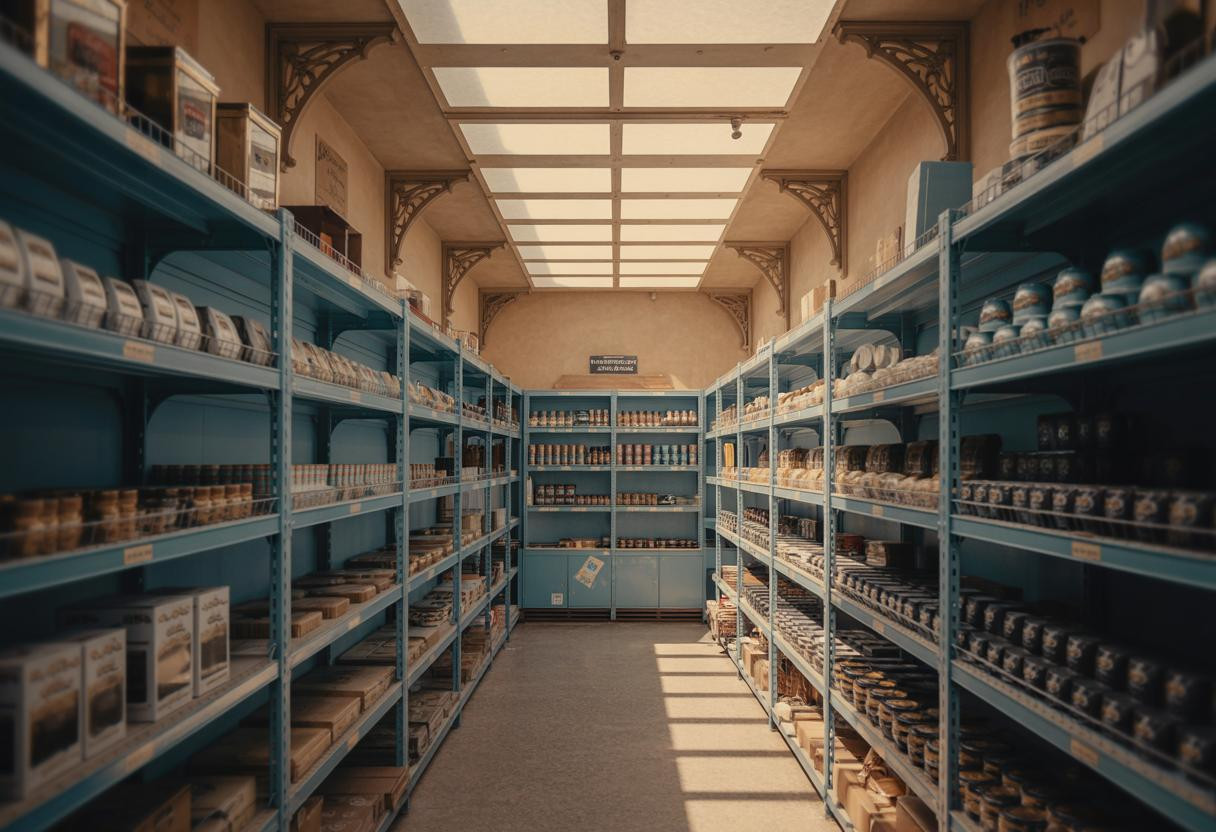Hidden deep in New Mexico’s desert lies a remarkable time capsule that challenges everything we think we know about food preservation—a general store sealed in 1923 where century-old candy still sits on shelves, defying the laws of decay and offering unprecedented insights into American frontier life.
The accidental preservation that stunned historians
The Pioneer Store Museum in Chloride, New Mexico represents one of history’s most extraordinary cases of accidental time capsule preservation. When silver mining ended in 1923, owner James Dalglish simply boarded up his two-story log store and walked away, leaving behind a complete inventory that would remain untouched for 70 years.
What makes this discovery truly remarkable isn’t just the preservation—it’s the scientific impossibility of finding organic materials like candy, food packaging, and paper goods intact after decades of exposure to desert conditions, rodents, and bats.
Don and Dona Edmund purchased the deteriorating building in 1989, expecting to find an empty shell. Instead, they discovered shelves lined with merchandise exactly as it appeared in 1923, including wrapped candies, canned goods, clothing, and mining equipment—all preserved by New Mexico’s uniquely arid climate.
What scientists discovered about desert preservation
The climate factor that changed everything
New Mexico’s desert environment created perfect preservation conditions through extremely low humidity levels that inhibited microbial growth and moisture-mediated decay. Unlike typical storage environments, the sealed store maintained consistent temperatures and minimal air circulation.
Research into similar preservation sites reveals that humidity levels below 30% can extend organic material lifespan by decades. The Pioneer Store’s contents survived because desert conditions essentially mummified perishable items, slowing decomposition to nearly imperceptible rates.
The unexpected role of isolation
The store’s remote location, miles from major settlements, protected it from human interference and environmental contamination. This isolation mirrors how infrastructure challenges facing rural communities can sometimes inadvertently preserve historical sites when access becomes limited.
Archaeological analysis suggests that complete environmental sealing prevented oxidation that would normally destroy paper, fabric, and organic compounds within years rather than decades.
Lessons that transform modern preservation science
The candy that rewrote preservation rules
Perhaps most shocking was discovering wrapped candies from 1923 still recognizable in their original packaging. Food scientists studying similar phenomena found that sugar acts as a natural preservative, while wax paper wrapping created additional moisture barriers.
This discovery challenges conventional wisdom about food preservation timelines and has influenced understanding generational perspectives on preserving physical items, showing how different materials respond to long-term storage in unexpected ways.
Economic insights frozen in time
The store’s inventory reveals fascinating patterns about 1920s rural commerce—from imported canned goods indicating complex supply chains to clothing sizes that reflect demographic data about frontier families.
Price tags and inventory records preserved inside demonstrate how remote communities paid premium prices for basic goods, with some items costing 300% more than urban equivalents due to transportation challenges.
Practical applications for modern preservation
Revolutionary storage techniques
The Pioneer Store’s accidental success has inspired controlled atmosphere storage methods now used in museums worldwide. Key principles include maintaining consistent low humidity, preventing air circulation, and using natural materials that don’t off-gas harmful chemicals.
Modern preservationists now recommend environmental sealing techniques that replicate desert conditions for long-term storage of organic materials, papers, and textiles.
Digital documentation breakthroughs
The Edmunds’ meticulous restoration process, documenting every item’s original position, pioneered 3D mapping techniques now standard in archaeological preservation. Their work demonstrates how remarkable stories of personal preservation and resilience can inspire innovative approaches to cultural heritage conservation.
The future of accidental preservation
The Pioneer Store Museum proves that nature sometimes preserves history better than human intention. As climate change threatens traditional preservation methods, understanding these accidental success stories becomes crucial for protecting cultural heritage.
This remarkable site reminds us that history’s most valuable lessons often come from the most unexpected places—including century-old candy that refused to surrender to time.
